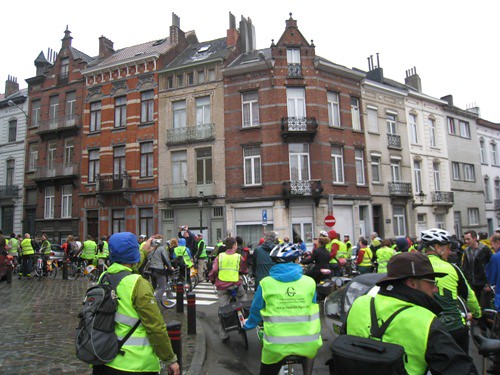
BRUSSELS – I was in Brussels last week to attend Velo-City 2009. This is the international bicycle policy conference, which takes place every two years (annually starting next year in Copenhagen), and I was invited to present a study of Bloor Street I worked on last summer. Among cycling advocates – at least the European ones I was exposed to at the conference – there is a lot of interest in studying and quantifying the economic benefits of cycling investments. The Bloor Street study showed that removing on-street parking and installing a bike lane or widening the sidewalk would be better for retail businesses on Bloor, rather than maintaining all the existing parking spaces for the relatively few number of customers who drive to the area.
Brussels has a population of 1 million and is considered to be the centre of Europe with the European Union, NATO and a host of other international organizations based here. While in Brussels I got to see quite a bit of the city, including while on a Critical Mass ride. However, it was surprising – despite all the conference presentations proclaiming the opposite – to experience a city that still very much feels like it is prioritized for the car. Yes, it has a well-developed tram, metro and inter-city train system, but considering the historic street network it’s “blessed” with, it can be tough to be a pedestrian or cyclist in Brussels. As you can see in the photo above, this is a city where cyclists don vibrant clothing to stand out – probably not a sign of a great cycling city. In this post I’ll highlight a few of the other things I noticed in Brussels – both useful and disappointing – relating to transport and public space.
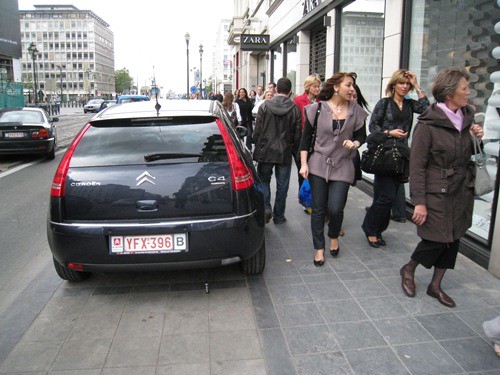
Sidewalk parking: On Avenue Louise, a busy shopping strip, street parking is up on the curb, mixed with pedestrians. While there may be some traffic flow logic to this, it squeezes pedestrians and makes for tricky situations when drivers are entering or leaving a spot. Needless to say, we should not be considering this in Toronto.
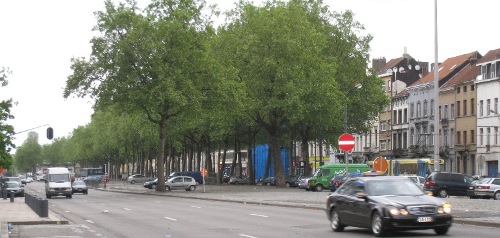
Boulevard Parking: Boulevard du Midi is a grand thoroughfare with three lanes of traffic on either side, as well as a tram line. The ample space in the middle of the street is dotted with trees and the occasional basketball court or playground. However, the majority of the space is used as a giant parking lot. Pedestrians are somewhat stranded across this vehicular abyss, and crossing is not a pleasant endeavour. Instead, this space could be used as parkland, a pedestrian promenade, a bikeway and for public squares – and I suspect it once was. Again, this wouldn’t be recommended for our wide arterials in Toronto.
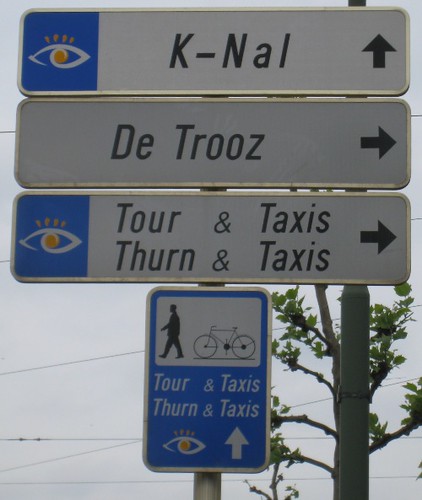
Mode-Specific Signage: On my way from the metro to the Velo-City 2009 venue, Tour & Taxis, I was pleasantly surprised to see differing directions based on whether one is traveling by foot and bicycle or car. Just like when choosing walking directions over driving directions on Google Maps, there are often more direct routes for those unrestricted by one-way streets and other car-specific barriers. This is definitely something to introduce to Toronto.

Space for Bicycles on the Metro: Just like in Toronto, one cannot take a bicycle on the metro during the morning and evening rush hours. However, during the rest of the week, it’s quite helpful to have space on the cars that allow one to easily bring aboard a bike. This section of the car is without seats, allowing a number of bicycles to fit without obstructing other transit riders. Though it’s probably too late to sneak this into the TTC’s new subway order, it would be nice to see this in Toronto someday.


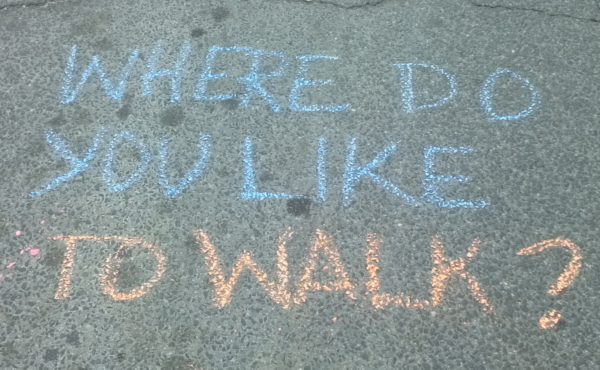
2 comments
In the first picture, I noticed that most of the cyclist are not wearing helmets, and some are wearing only hats.
If I remember correctly, Brussels has many narrow streets, consequently, there is virtually no parking for cars. I guess the only way to accommodate parking on some streets is to use the sidewalks, ugh!
There are still more helmets than in nearby Amsterdam, where such contraptions are utterly unknown. And nobody except workers who wear safety gear in their jobs would wear flourescent vests in Amsterdam. This still shows that a cycling-friendly environment where such things are superfluous is a long way off in Brussels.
Of course, like most European cities that were not utterly bombed and rebuilt after the War (Rotterdam, parts of Berlin) Brussels has narrow streets not designed for cars, except the boulevards that were built in the 19th century (for troop movements even more than for goods movements). No, the only proper thing is to make parking more expensive and difficult and make the city public transport, pedestrian and cyclist centred.
I think that contrary to expectations, Paris has overtaken Brussels in emulating Amsterdam and Copenhagen as cycle-friendly towns.